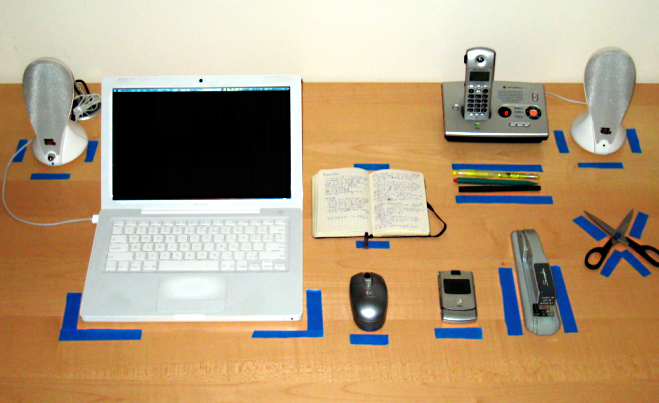We’ve All Seen It…
You know, the office desk has been “5S’ed”. There’s a place designated for the phone, stapler, note pad, paper clips, and so forth. Perhaps even a coffee cup. All areas are taped off or outlined, labeled and color coded, much like the factory floor that’s been 5S’ed. It’s classic. In the early days of applying Lean to an office environment, this type of Office 5S was the approach taken without much thought, consideration or understanding that a person’s desk is a very private place.
People tend to organize their desk the same way they organize their home; and they are not very appreciative of others coming in to “help”. So . . . if stapler, paper and coffee cup organization is not a point of significant leverage (improvement) for the organization, can 5S be effectively applied in the office?
The answer is yes!
Office 5S
Consider a typical business office. There are files, data, documents, reports and many other business related materials. These are kept in file cabinets, on file servers, in databases, shared drives, backup media, offsite storage centers, collaboration sites, and an assortment of other business efficiency products.
Could these benefit from a 5S program?
Let’s look a little closer:
- Sort: when in doubt, throw it out, delete it or archive it. Have you looked at your computer’s hard drive lately? Do you keep different versions of the same document? Do you struggle to identify the latest version? Think about the amount of time wasted looking through files, trying to find the correct one. How about the time wasted in finding the latest version of a file on a shared drive. Would your organization benefit from having only the documents used on a regular basis stored in the area? Would your organization benefit from having only a single copy of relevant materials present?
- Straighten: decide where to keep necessary items and then organize accordingly. In my experience, this is rarely formalized but discovered by the individual as they are assimilated into the organization. File shares, folder structures and naming conventions arranged in a logical fashion to promote easy access is a very large opportunity . . . in any organization.
- Shine: perform a thorough cleaning. Do yourself a favor . . . look at any data storage location and ask “is the area clean and free of data clutter?”. There are a number of reasons to regularly clean files etc. First and foremost, clutter leads to waste. Second, storage costs money. Third, it exposes the organization to unnecessary risk. Get in the habit of cleaning at appropriate predetermined intervals.
- Standardize: be intent on standardizing the daily work. Develop database naming conventions, folder and file name standards, etc. Review methods on a regular basis, and as new methods are developed, quickly document and have them adopted by others.
- Sustain: sustaining the improvements is the responsibility of management. The area of concern falls under the responsibility of a manager with 5S auditing and assignment authority.
A set of Excel tools has been developed to guide the practitioner in implementing and controlling an Office 5S event. It can be downloaded here. It is not intended to be restrictive – it is just a guide and can be easily modified. Extend this thinking to databases, repositories, collaboration sites, etc and you will uncover a wealth of opportunity. Get started today!







